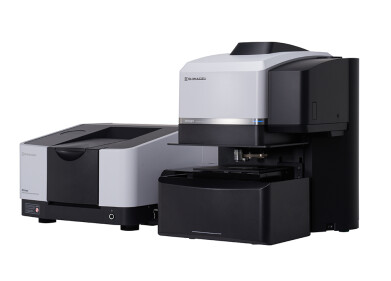Mass Spectrometry & Spectroscopy
What Techniques Are Used in Foodomics?
Jul 29 2022
Food fraud doesn’t just have an enormous economic impact. Many cases also put consumers at risk, with scandals like the 2009 peanut butter salmonella outbreak demonstrating how dangerous food fraud can be. Around the world, foodomics is a first-line of defence against food fraud. Read on to find out more about some of the cutting-edge techniques used by foodomics scientists, and the role they plan in preventing economically motivated crimes within the food and agriculture industries.
Chromatography for lipidomics analysis
Lipidomics is an advanced discipline used to identify and quantify different lipid species, as well as observe how they interact with other lipids. With more than 1000 major lipid species currently identified and countless minor species unknown to scientists, lipid classification is a complex and highly specialised field.
It’s particular useful in the food science sector as lipids dictate biological functions in the body. Lipidomics helps scientists understand how individual lipid species affect metabolic pathways and ultimately, promote or hinder health. Scientists rely on a myriad of separation-based techniques for lipidomics analysis, including standard chromatographic methods such as high-performance liquid chromatography (HPLC), thin-layer chromatography (TLC) and gas chromatography (GC).
Tandem Mass Spectrometry to create molecule signatures
Metabolomics, the study of small molecules that interact with biological systems, is fundamental to foodomics. The field is concerned with identifying and quantifying chemical substances produced by the metabolism and analysing how they affect biological processes.
At the University of California San Diego, a team of researchers used tandem mass spectrometry (MS/MS) to gather human metabolomics data. A novel technique called reference-data-driven (RDD) analysis was used to match this information with a virtual MS/MS database. This allowed the team to identify food-derived molecules not previously detected in blood and stool samples. The technique is called untargeted metabolomics, with a report in the journal Nature Biotechnology explaining how it allowed the team to develop a huge database of molecular signatures.
Next-Generation Sequencing to screen saffron
Usually sold by the gram, saffron is one of the rarest and most expensive spices in the world. This naturally makes it a target for economically motivated food fraud. In Europe, Next-Generation Sequencing (NGS) is being used to create transparency and accountability in the saffron market. The advanced DNA analysis technique has allowed forensic food analysts to verify a wide range of plant species, including saffron derived from the Crocus sativus flower. Most laboratories use Polymerase Chain Reaction (PCR) technology to amplify DNA samples. This technique is also widely used in medical cannabis laboratories to identify microorganisms and mycotoxins.
From identifying fraudulently labelled meat products to detecting adulterants like sucrose syrup in honey, foodomics plays a critical role in the right against food fraud. Find out more in our in-depth review, ‘A Complete Guide to Food Fraud & Foodomics’. Or read 'Accurate Testing Keeps Farm Animals Healthy' to discover the importance of testing on animals at the very start of the food production chain.
Digital Edition
International Labmate Buyers' Guide 2024/25
June 2024
Buyers' Guide featuring: Product Listings & Manufacturers Directory Chromatography Articles - Enhancing HPLC Field Service with fast-response, non-invasive flowmeters - Digital transformatio...
View all digital editions
Events
Jul 07 2024 Dublin, Ireland
Jul 20 2024 Denver, CO, USA
Jul 21 2024 Cape Town, South Africa
Jul 28 2024 San Diego, CA USA
Jul 30 2024 Jakarta, Indonesia


















